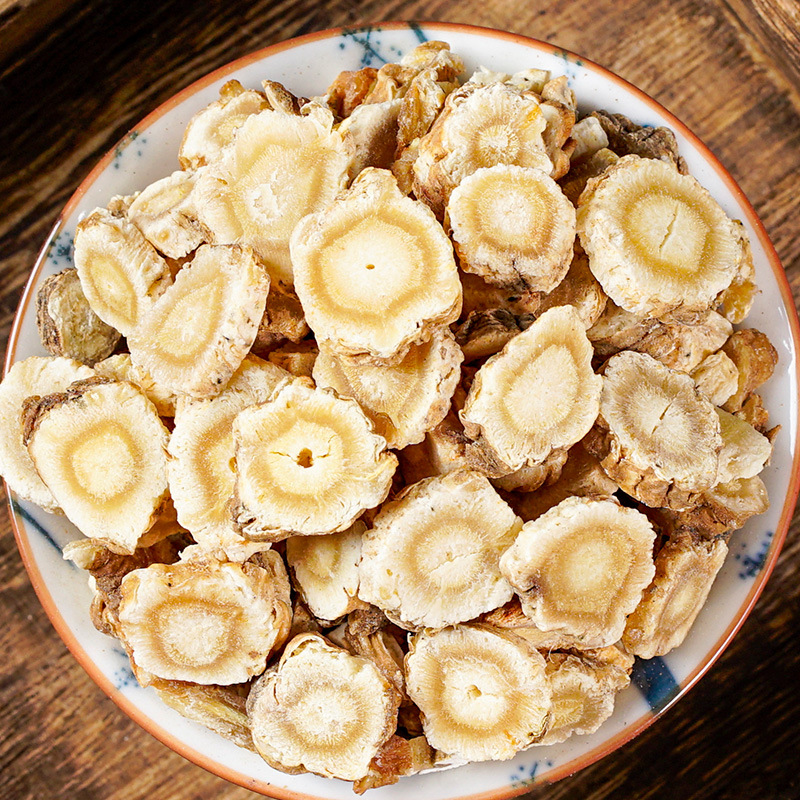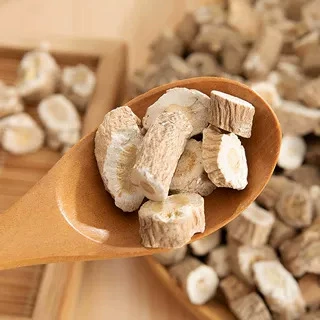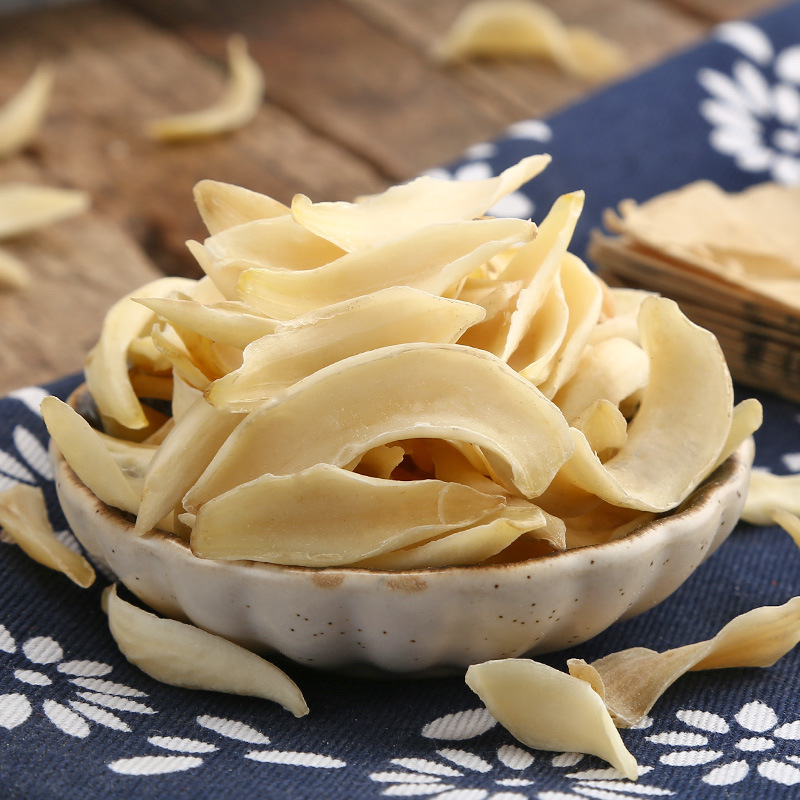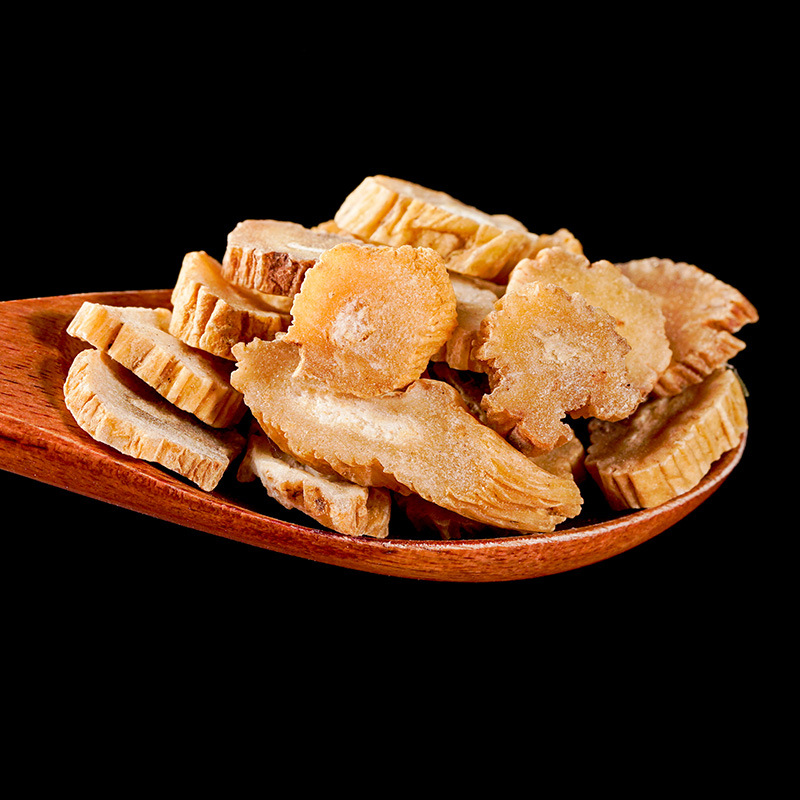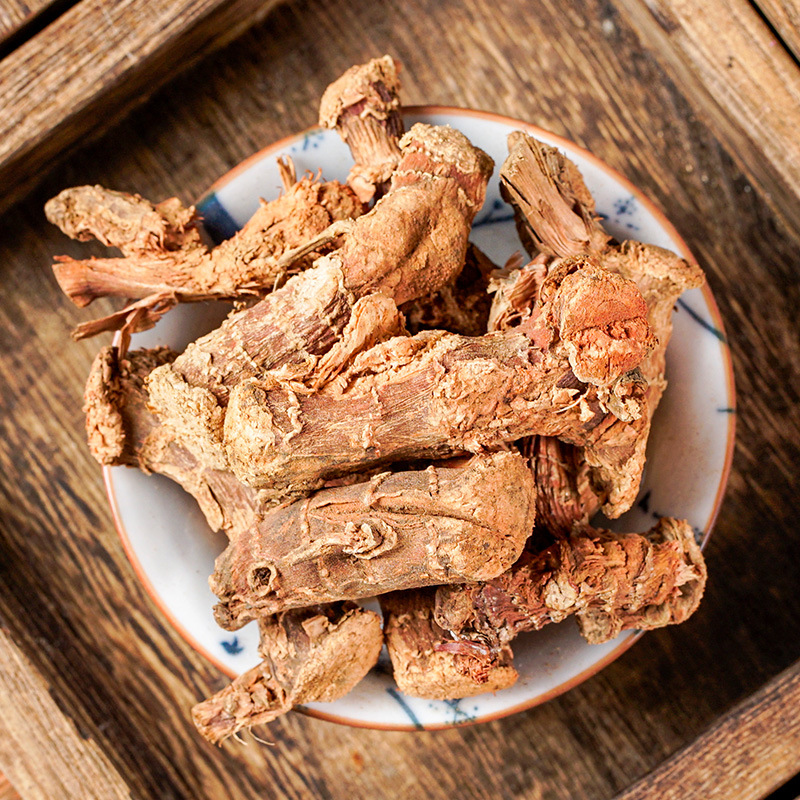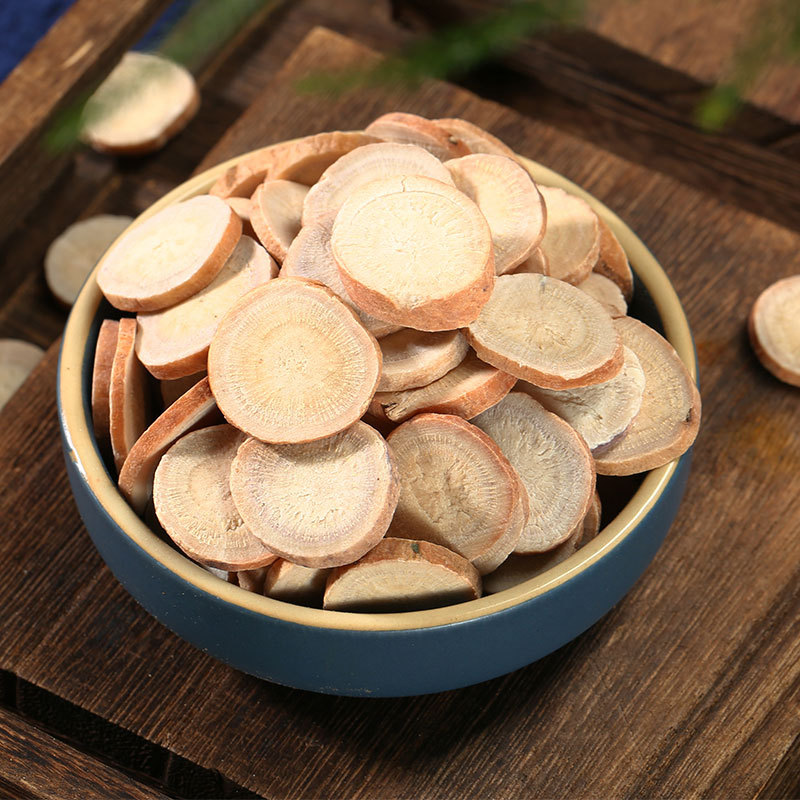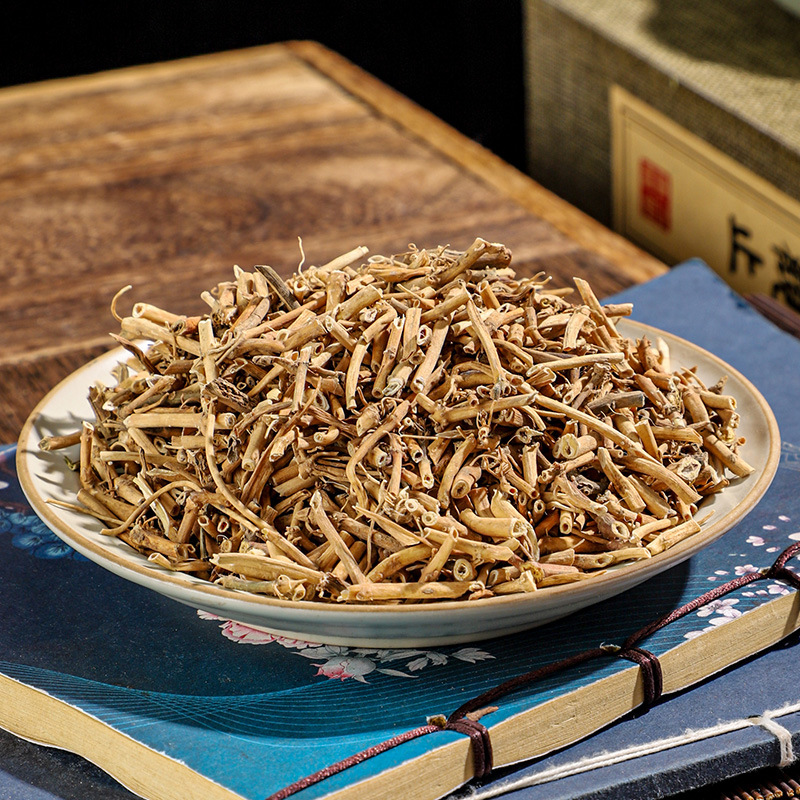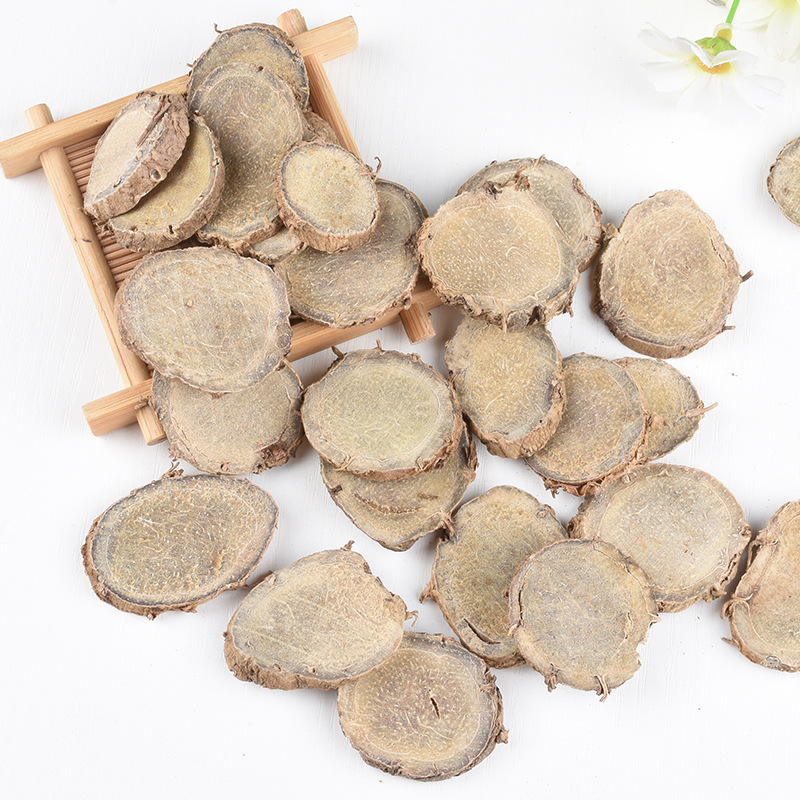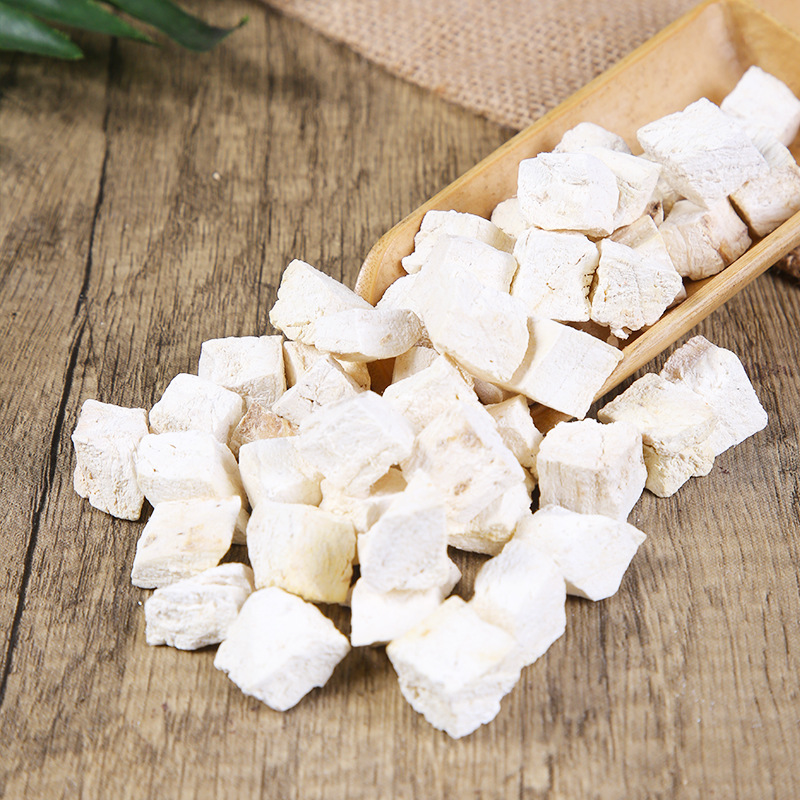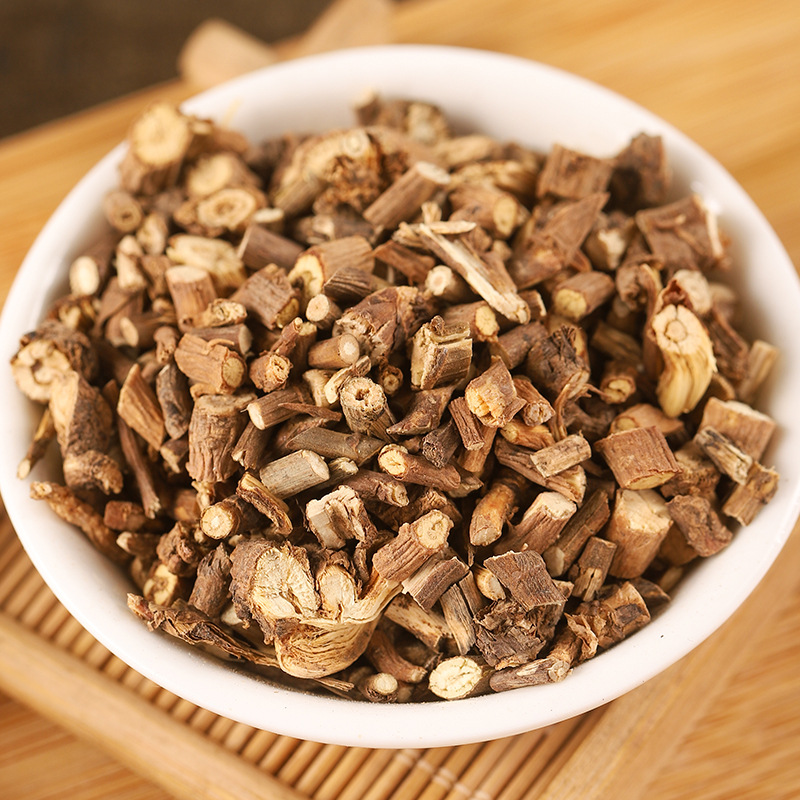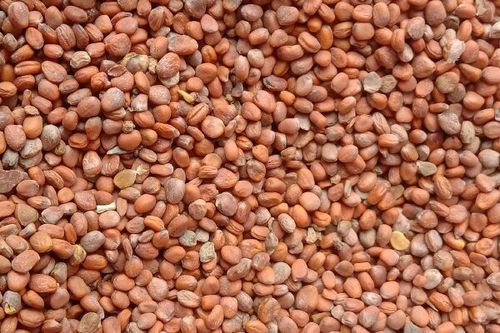
Source: The dried, mature seeds of the annual or biennial herb Raphanus sativus L. of the Brassicaceae family (including varieties such as Water Radish, Bian Radish, Green Radish, White Radish, etc.). All are cultivated.
Habitat: Produced throughout China.
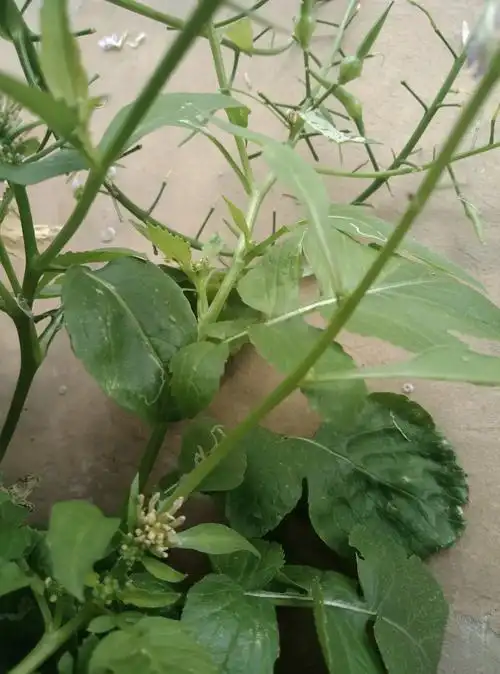
Macroscopic Identification: Seeds are sub-spherical and slightly flattened. Long diameter 2.5-4 mm, short diameter 2-3 mm, thickness 1-2 mm. The surface is reddish-brown or grayish-brown, with several longitudinal furrows on one side. The seed coat is thin, containing two yellowish-green cotyledons rich in oil. Odor, slight; taste, slightly pungent. Those with large, plump, uniform, and reddish-brown grains are of superior quality.
Main Constituents: Contains fatty oil, volatile oil, etc.
Pharmacological Actions: Promotes digestion, resolves phlegm, directs qi downward, relieves wheezing. Its mechanism is based on strengthening the stomach and dispelling phlegm.
Processing: Stir-fried for use.
Properties & Flavors: Sweet, acrid, neutral.
Meridian Affinity: Enters the Lung and Spleen meridians.
Functions: Directs qi downward to relieve wheezing, transforms phlegm, disperses food accumulation.
Indications: Cough with wheezing and phlegm, food accumulation with qi stagnation, fullness and distension in the chest and abdomen, tenesmus in dysentery.
Clinical Applications:
Used for treating gastrointestinal accumulation and stagnation, suitable for symptoms such as abdominal distension, borborygmus, belching with acid regurgitation, and tenesmus after diarrhea. Often combined with Hawthorn Berry (Shanzha), Germinated Barley (Maiya), Medicated Leaven (Shenqu), etc. In recent years, in the integrated traditional Chinese and Western medicine treatment of acute abdominal diseases, its action of breaking qi and guiding out stagnation has been utilized by adding it to Da Cheng Qi Tang to enhance the dispersing and guiding effect, as in the formula Jia Wei Da Cheng Qi Tang.
Used for treating cough with wheezing and phlegm. It is more suitable for chronic asthmatic bronchitis presenting with patterns leaning towards heat and excess. It is used for its ability to transform phlegm and direct qi downward, thereby alleviating wheezing and cough. Combined with [ingredients typically in] San Zi Jie Chuan Tang, or with [other herbs]. A representative formula is Lai Fu Bai Guo Tang.
Usage Precautions:
Radish Seed should be stir-fried when used for directing qi downward and promoting digestion, but used raw when employed for transforming phlegm and relieving wheezing. Under normal circumstances, it can also be used half raw and half processed.
Long-term use of Radish Seed may potentially break qi excessively;
Previous practitioners stated that Radish Seed is contraindicated for those taking [Renshen/Ginseng] or [Dangshen/Codonopsis]. However, in reality, they are not an incompatibility; no severe reactions occur when used together. It's simply that Ginseng and Codonopsis tonify qi, while Radish Seed breaks qi. If a debilitated individual is already taking a Ginseng/Codonopsis supplement and then takes Radish Seed, it might potentially counteract the qi-tonifying effect.
Dosage: 3-9g.
Prescription Example: Lai Fu Bai Guo Tang: Radish Seed (Lai Fu Zi) 9g, Ginkgo Seed (Bai Guo) 9g, Prepared Rehmannia (Shu Di Huang) 18g, Tangerine Peel (Chen Pi) 6g, [likely a typo/missing herb, common additions include Apricot Seed (Xingren) or Perilla Fruit (Suzi)] 9g. Decoct in water for oral administration.
Addendum: Di Ku Lou (Earth Skeleton)
This is the dried, thin, fibrous, and fleshless radish root pulled from the ground after the Radish Seed has matured. After washing and sun-drying, it is also used medicinally, named Dried Radish/Withered Radish (also known as Immortal's Head). Flavor: sweet; Property: neutral. Enters the Lung meridian. Functions: Promotes urination to reduce edema, ventilates the lungs (or "diffuses stagnant lung qi"). Indications: Lung abscess, relieves coal gas poisoning.

